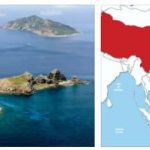The thoughts and explanations are many about why the world is as full of differences and contrasts as it is. Experiences from recent years show that it is difficult to conduct nation building and build states from outside, e.g. from the West; such attempts are easy to strand – almost no matter how well-intentioned they are. Much is therefore up to the individual country itself.
- Why have some countries created growth and prosperity – other countries have not?
- Why did the West get the rule of law and democracy – others did not?
- What do institutions mean to explain political and economic differences in the world?
- How has Western aid affected Africa after the liberation from the colonial powers?
This article is based on a book review of two books: The Great Escape – Health, Wealth, and the Origins of Inequality (Angus Deaton). There, Deaton explains how the West escaped poverty, disease and early death in the period after the Enlightenment (ca. 1700-1800) and during the Industrial Revolution .
In the book Why Nations Fail – The Origins of Power, Prosperity and Poverty (Daron Acemoglu and James A. Robinson), the two authors examine what institutions mean to the people of the city of Nogales. These are actually two cities – one in US A, the other in Mexico , but divided by a border and a fence .
With concepts such as inclusive and exclusive institutions, the authors try to show how the great differences in the world, among other things, are based on differences in institutions and governance.
2: UK – where it started
It was in Britain that it started – the industrial revolution , and then with an increase in living standards and life expectancy in its wake. Before 1750, life expectancy, even for the upper class, was less than 40 years. Money and large palaces provided no protection against the same infectious diseases that took the lives of most people. Life expectancy was low also as a result of wars and bad years.
After 1750, the fluctuations decreased, and life expectancy increased steadily, but only by a few years, until 1850. However, the life expectancy of the very richest increased by 20 years in the same period, largely because the upper class had opportunities to be immunized against smallpox. Most people did not have that opportunity.
After the industrial revolution, the West has left the rest of the world in standard of living and health. The increase in standard of living and life expectancy was no longer reserved for the upper class, but included the entire population. Technical and medical breakthroughs were important. But it was also important with pressure from the workers and the formation of political alliances.
Trade unions, party democracy and eventually universal suffrage pushed for a policy for better public health. The policy was based on scientifically based knowledge about the causes of disease and infection, and the government authorities therefore initiated sewerage, sewerage of water sources, vaccination programs, health stations, housing construction and education.
In retrospect, the last 250 years of industrial capitalism and political democracy in the West appear as the prime example of what some call an inclusive system: Despite the skewed distribution of political and economic power, the poorest won with demands for higher living standards and better health. Through collective organization and alliance building , political pressure was created for material improvements and a higher quality of life.
3: Nogales – two cities in the same city
The inhabitants of the north side of the fence (in the United States) who divide the city of Nogales in two, live longer and safer lives, and they earn three times as much as the neighbors in the south (in Mexico). There is no difference in either geography or climate north and south of the border. The inhabitants on both sides of the border are exposed to the same diseases, have the same ethnic background and like the same food and music. In short: they have the same culture. Why then does life behave so differently? A preliminary answer is that Mexico, indeed all of Latin America, was colonized in a different way than North America.
In North America, according to phonecations, private property and political power were widely distributed to settlers who cultivated the land themselves – their own land. In Latin America, on the other hand, property and power were concentrated among a few conquerors, who used the indigenous people as labor. In the institutions (see below) created by the Spanish conquerors, much of the root of Latin American history lies – with peasant uprisings, left-wing guerrilla movements, military dictatorships and conspiracies between corrupt politicians and drug cartels .
In Latin America, the indigenous people were relatively quickly replaced by slaves imported from Africa. The southern states of the United States also based their cotton production almost exclusively on imported slave labor. Slavery was central to the US economy in the first half of the 19th century, as slave-grown cotton accounted for more than half of the country’s exports.
The colonization of America and the transatlantic slave trade (part of the triangle trade ) was a critical period in history. In Britain and North America, trade with the colonies led merchants and citizens to form a political alliance to fight autocracy, monopolies and privileges . This laid the foundation for democratic and capitalist development.
In Latin America, the Caribbean and Africa , on the other hand, the triangular trade strengthened the institutions that already concentrated the economic and political power of a small elite: in Latin America with the descendants of the Spanish conquerors, in West and Central Africa with native kings and chiefs.








